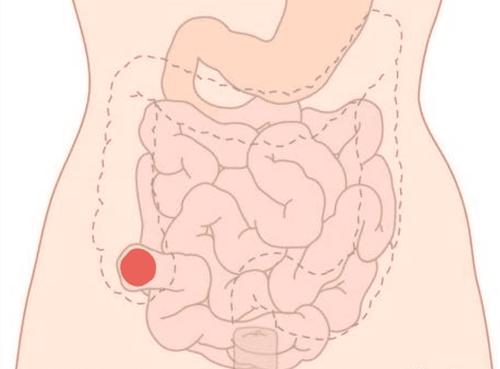This is an automatically translated article.
The article was professionally consulted by MSc Vu Van Quan - Department of General Surgery & Anesthesia - Vinmec Hai Phong International General Hospital.Damage to the lungs or organs such as the uterus, intestines, ovaries....can cause TB bacteria to form and reach the peritoneum through the bloodstream or lymphatic route. Tuberculosis of the peritoneum is easily confused with other diseases in the abdomen, so it is often detected late, greatly affecting the results of treatment.
1. What is peritoneal tuberculosis?
Tuberculosis of the peritoneum is a common pathology of abdominal tuberculosis, a specific inflammatory lesion of the peritoneum caused by the bacterium Mycobacterium tuberculosis. This disease can affect people of all ages and genders, but is most common in young adults and women. In the early stages, peritoneal tuberculosis is difficult to detect because of the poor clinical symptoms. Towards the end stage, clinical manifestations become abundant because of damage to other organs. If not detected and treated promptly, the disease will progress to complicated and serious complications leading to death.
Anyone is at risk of peritoneal tuberculosis, but most often under the age of 40, according to statistics, female patients with peritoneal TB account for nearly 90% of all cases, the rest are women heavy alcoholism, overwork, immunodeficiency, living in unsanitary conditions, lack of food, especially protein and vitamin deficiency...
2. Path of transmission of peritoneal tuberculosis bacteria
There are 4 ways to bring TB bacteria into the peritoneal cavity to cause peritoneal tuberculosis for patients, including:
First: TB bacteria from the mesenteric lymph nodes spread through the lymphatic route or approach to the peritoneal cavity. . Second: Bacteria from the ileocecal or small intestine spread through the intestinal wall to the peritoneum. Third: Bacteriophage by hematogenous spread of tuberculosis lesions distal in the abdomen. Fourth: The bacteria spread from the Fallopian tube to the peritoneum, which explains why the rate of peritoneal TB infection is higher in women. Women of reproductive age, if not careful, are very susceptible to infection. Once infected with peritoneal TB, they will face many risks to childbirth, pregnancy...
3. Signs of peritoneal TB
Patients with peritoneal tuberculosis in the early stages will have very faint clinical signs, so it is difficult to detect, the disease in the late stages, the signs are more obvious.
Depending on the location of the TB lesion, there is localized or diffuse peritoneal TB, but the clinical manifestations in patients are quite diverse. In the form of chronic peritoneal tuberculosis will be divided into: tuberculosis ascites, ulcerative tubercles and fibrous adhesions.

Tuberculosis of the peritoneum ascites:
The patient will have clinical manifestations as mild fever for a long time, or fever in the afternoon and night, when the fever reaches 39-40 degrees, the patient can recognize it, but if the fever is mild The patient may not realize it. In this case, the patient often has an upset stomach, poor appetite, indigestion and bloating, thinness, night sweats, and is prone to persistent dull abdominal pain in the abdomen or intermittent pain with unclear pain location. , has digestive disorders and the abdomen will gradually enlarge to a moderate degree, when the patient sits or stands, the abdomen will sag and protrude forward, examination can see solid patches, scattered throughout the abdomen.
Sebaceous peritoneal tuberculosis:
This is a severe form that can cause local abscesses and can cause rupture, peritoneal effusion, leakage of pus into the abdominal wall or leakage of pus into the colon, The residue will follow the feces out. Patients can die at any time due to wasting or severe complications in the gastrointestinal tract, the disease will be especially dangerous when there are signs of tuberculosis of the lungs and other organs.
Adhesive sclerosing peritoneal TB:
Is the most severe form of chronic peritoneal TB and is the next stage of pox ulcer or peritoneal tuberculosis ascites, because it is an adherent fibrous form, it can constrict the intestines and cause syndromes. semi-obstructive or intestinal obstruction requiring surgical intervention. Patients with peritoneal tuberculosis with adhesions may also have perihepatic adhesions, blocked ducts, and cholecystitis. This form of disease is easy to progress to severe and cause the patient to die.
4. Can peritoneal tuberculosis be cured?
Whether peritoneal tuberculosis can be cured is a question of many people, however, to answer this question depends on many factors, especially the location of the TB lesion and the time of detection of the disease. soon or late. Currently, patients can be cured of peritoneal TB if treated with anti-TB drugs according to the right regimen and enough time.
Tuberculosis peritoneum, if not treated early, can leave sequelae on the digestive system and spread bacteria that are dangerous to life and spread to society.
The treatment of peritoneal tuberculosis is mainly sun therapy and rest. Patients can be prescribed treatment with specific TB drugs such as Rimifon and Streptomycin, Rifampicin... Depending on the type of disease, the doctor will have different treatment regimens, but it is still mainly medical treatment with the underlying cause. Obstruction and the same regimen as in the treatment of pulmonary tuberculosis, while surgical treatment is only prescribed together with TB drug treatment when the patient has complications of intestinal obstruction.
In addition to complying with the treatment of peritoneal tuberculosis as directed by the doctor, the patient needs to develop a diet, moderate activity, adequate quality and sleep on time to strengthen the body's resistance.
Master. Doctor. Vu Van Quan has more than 10 years of experience working in the field of General Gastroenterology, specializing in examining and treating surgical pathologies of the gastrointestinal tract, liver, bile, pancreas and diseases of the abdominal peritoneum and abdominal wall. .
Please dial HOTLINE for more information or register for an appointment HERE. Download MyVinmec app to make appointments faster and to manage your bookings easily.














